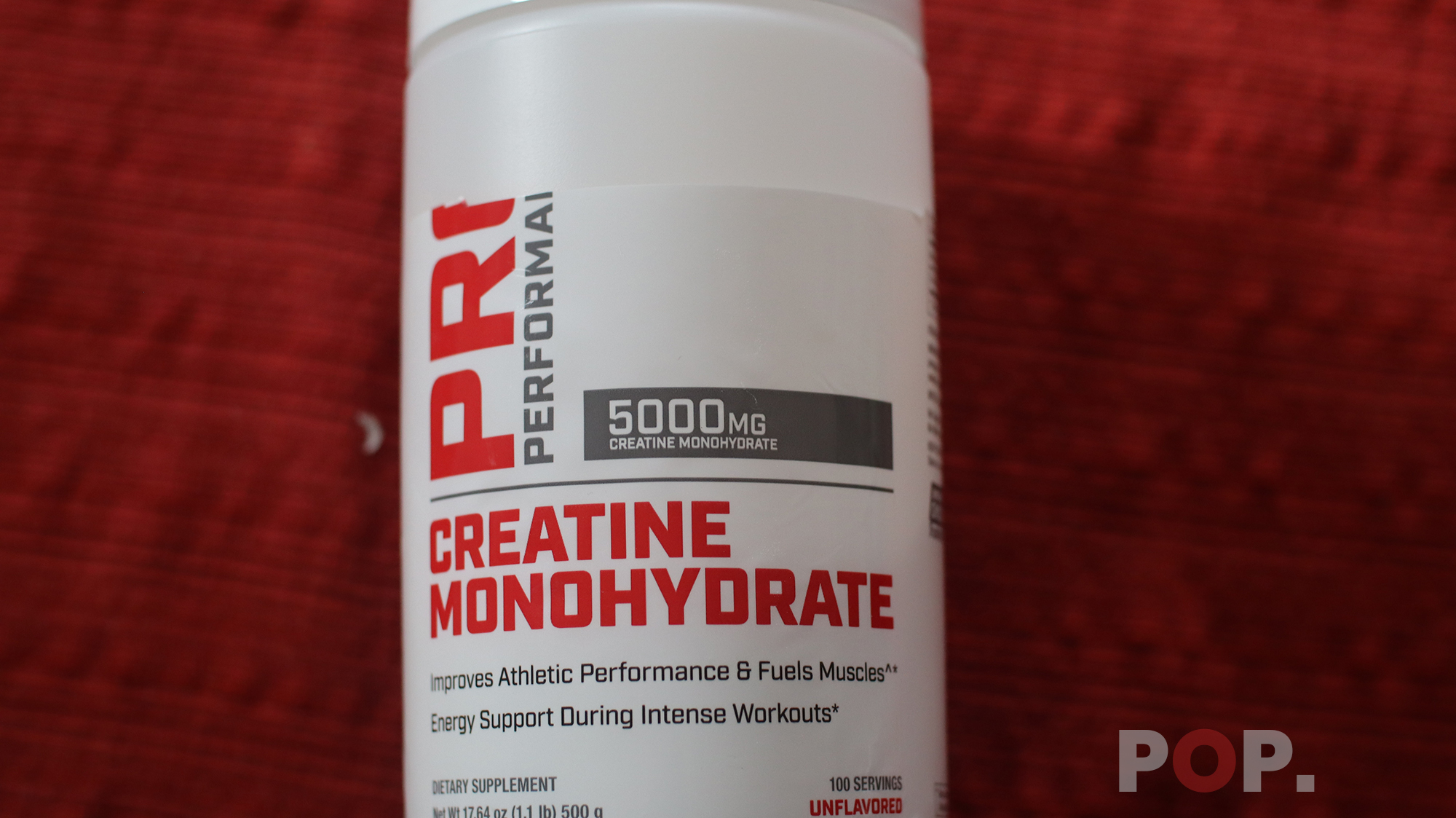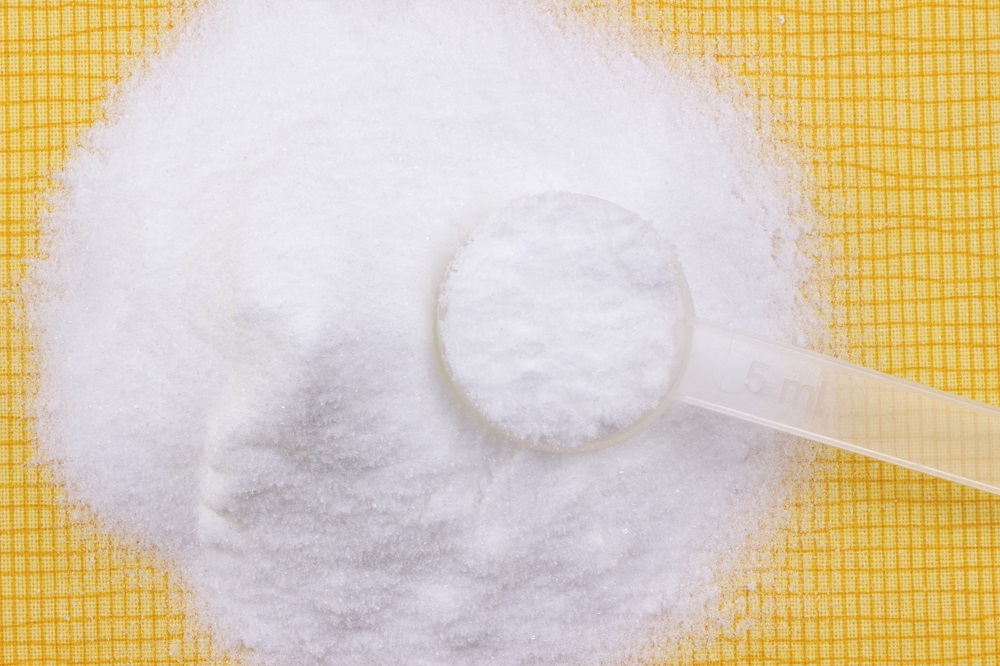While there are different forms and types of creatine available, the two most commonly used are creatine monohydrate and creatine hydrochloride (HCL).
Structurally, creatine monohydrate is creatine bound to one molecule of water while creatine HCL is creatine bound to one hydrochloric acid molecule. Creatine monohydrate is more popular and more consumed than creatine HCL. This might be due to price and because it is more studied and established. On the other hand, creatine HCL is more water soluble (possibly more readily absorbed by the body) and less creatine HCL is needed per serving.
This article will discuss what creatine is, explain the differences between monohydrate and HCL, and if one is considered better than the other.
What is Creatine?
Creatine is an organic compound that is naturally produced in the body (specifically the liver, kidneys, and pancreas). Creatine can also come from food such as meat and fish, and while cooking can degrade the creatine into creatinine, food sources can account for approximately 1-2 grams of creatine.
Creatine is involved in one of the processes that produce ATP (adenosine triphosphate), the major energy currency in the body. Inside the mitochondria, a working cell uses ATP for various cellular processes and when used up, ATP is reduced into ADP (adenosine diphosphate). There are a few ways the cell can generate more ATP, but one way is to use creatine to recycle ADP back into ATP.
Thus, dietary creatine can increase muscle capacity, enhance muscle fiber size, increase lean body mass, and help prevent tissue damage.
As a supplement, creatine comes in different form factors. The most common would be in powdered form. Creatine in powdered form can be mixed with water, juice, tea, or any other beverage.
While other forms provide added benefits such as convenience, most consumers still opt for powdered creatine because it is more economical for relatively the same nutritional value.
Furthermore, creatine is stable in powdered form and begins to degrade once mixed with water, making ready-to-drink creatine beverages questionable regarding how long they remain effective.
Creatine also comes in other chemical forms such as creatine citrate, creatine malate, and creatine magnesium chelate. Different forms of creatine offer different added benefits such as better muscle absorption, longer duration in the blood, higher anaerobic energy production, and so on.
For this article, two forms will be highly detailed: creatine monohydrate and creatine HCL.
Creatine Monohydrate

Creatine monohydrate (C4H11N3O3) is the chemical form of creatine (C4H9N3O3) wherein a single molecule of creatine is bound to one molecule of water (H2O). Creatine monohydrate is the most common form of creatine found in creatine supplements.
Creatine monohydrate did undergo a period of uncertainty. Around the early 2000s, creatine monohydrate was deemed unsafe by the Scientific Committee on Food (SCF) despite insufficient evidence.
Throughout the years, more and more assessments were done and eventually, it was validated by several food safety agencies (e.g., European Food Safety Authority, French Agency for Food, Environmental and Occupational Safety Agency, Norwegian Scientific Committee for Food Safety, etc.).
To effectively take creatine monohydrate, it is commonly recommended to undergo a "loading phase." This process saturates the muscles with creatine in a short amount of time.
The loading phase for creatine monohydrate involves taking about 20 grams per day for five to seven days. Usually this amount is divided throughout the day. Afterwards, daily doses of three to five grams should be sufficient. The daily doses will keep the muscles saturated with creatine, and the creatine saturation will decline as soon as the daily doses end.
While the loading phase can speed up the process, a 1996 paper published in the Journal of Applied Physiology found that daily doses of three grams can reach saturation after 28 days.
While still the more popular option, creatine monohydrate does have some downsides:
Creatine monohydrate has been known to increase water retention in the body. A 2016 study published in the International Journal of Sports Medicine studied the effects of creatine monohydrate on water retention in 16 soccer players.
The group treated with creatine monohydrate for six days showed significantly more water retained in the body compared to the placebo group.
Creatine Hydrochloride (HCL)

Creatine HCL (C4H10CN3O2) is the chemical form of creatine (C4H9N3O3) wherein a single molecule of creatine is bound to one molecule of hydrochloric acid (HCl).
Creatine HCL is relatively new compared to creatine monohydrate. However, it is already gaining popularity as a more effective form of creatine. The added hydrochloric acid makes this form of creatine more acidic, and subsequently more soluble in water.
Unlike creatine monohydrate, creatine HCL does not need a loading phase. A person can begin taking creatine HCL right away at the suggested effective dose of just one to two grams daily.
Which is Better?
Studies surrounding this topic have conflicting conclusions. Some show creatine monohydrate to be more effective, where-as others show creatine HCL to be more effective. Some state that there is no difference in the two.
A 2020 short-term study published in Science and Sports compared creatine monohydrate and creatine HCL on 36 healthy adults. The study compared the two using the recommended serving size: 20 grams creatine monohydrate and 3 grams of creatine HCL. The study tested physical performance at the beginning and at the end of a 6-month period of resistance training with one serving of each supplement per day.
The paper found that while 20 grams of creatine monohydrate was able to increase explosive power, upper body strength, and lower body strength, three grams of creatine HCL was not able to induce statistically significant changes in these parameters.
The study also tested for two hormones in particular, testosterone and cortisol. These hormones are representative of the body being in a catabolic state or an anabolic state. When in catabolism, the body is breaking down materials in the body for further use while anabolism is the reverse, the body is building materials. The paper found that the group treated with creatine monohydrate was in an anabolic state. The group treated with creatine HCL did not show a change in these hormones.
A 2015 study published in Food and Nutritional Sciences compared creatine monohydrate and creatine HCL in 40 recreational weightlifters.
The study showed no difference in effectiveness of creatine monohydrate and creatine HCL, but the group treated with creatine HCL did show a decrease in fat mass and an increase in fat-free mass.
At least in terms of effectiveness, it may heavily depend on the individual. There is no study on creatine HCL looking into the differences in response, but a 2004 study published in the Journal of Strength and Conditioning Research looked into the physiological profiles of people who respond to creatine monohydrate versus those who did not. The paper found that there appears to be certain physiological profiles that uptake creatine more than others.
Unless studied, this may be the case in creatine HCL as well. It is unclear whether people who do not respond to creatine monohydrate will respond to creatine HCL.
Aside from efficacy, consumer experiences also play a role in the difference between the two. While studies have proved creatine monohydrate can increase water retention, many people report that they also feel “puffy” when taking creatine monohydrate.
A 2010 paper published in the Journal of Dietary Supplements found creatine HCL to be more water soluble by as much as 38 times. This extremely high water solubility suggests that creatine HCL could be absorbed by the body more effectively than creatine monohydrate.
Other symptoms people have reported include gastrointestinal discomfort. The problem with these anecdotes is that the number of people consuming creatine monohydrate is still statistically greater than people taking creatine HCL. While there are few to no reports of side effects in taking creatine HCL, it may just be a matter of sample size.
Pricewise, creatine monohydrate is cheaper. Even when the daily doses of creatine HCL is smaller, the economic outcome of each serving of creatine monohydrate still comes out less.
Final Thoughts
Unfortunately, while there are some, there isn't enough enough studies available that compare creatine monohydrate and HCL in terms of physical performance parameters, hormonal influence, and other criteria relevant to fitness.
While creatine HCL may indeed be more efficient than creatine monohydrate, creatine HCL is relatively new and is not as researched as creatine monohydrate is.
Creatine monohydrate has already undergone numerous studies proving its effectiveness in improving physical performance and muscle growth. Creatine monohydrate has also been used long enough that studies have also validated its safety.

